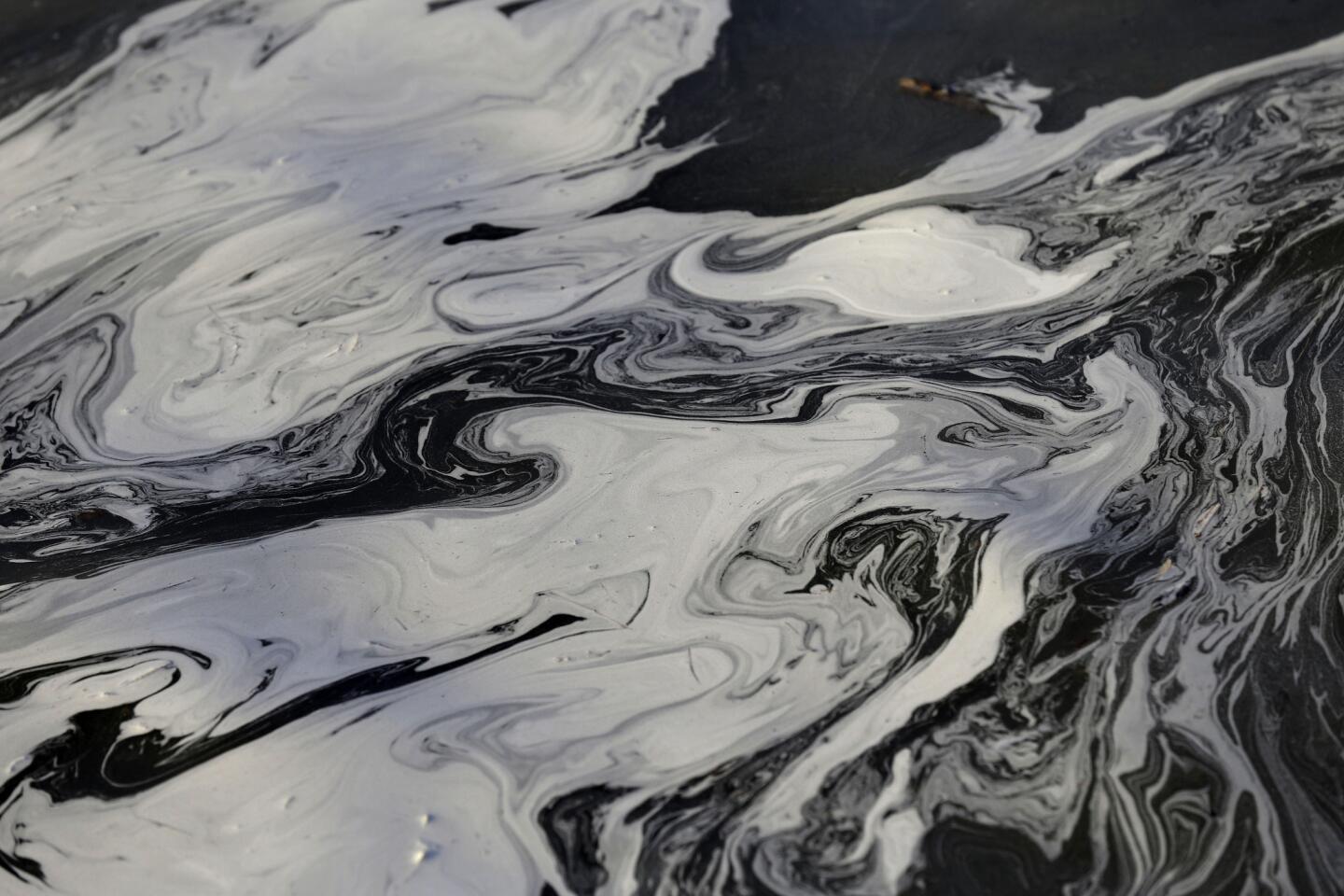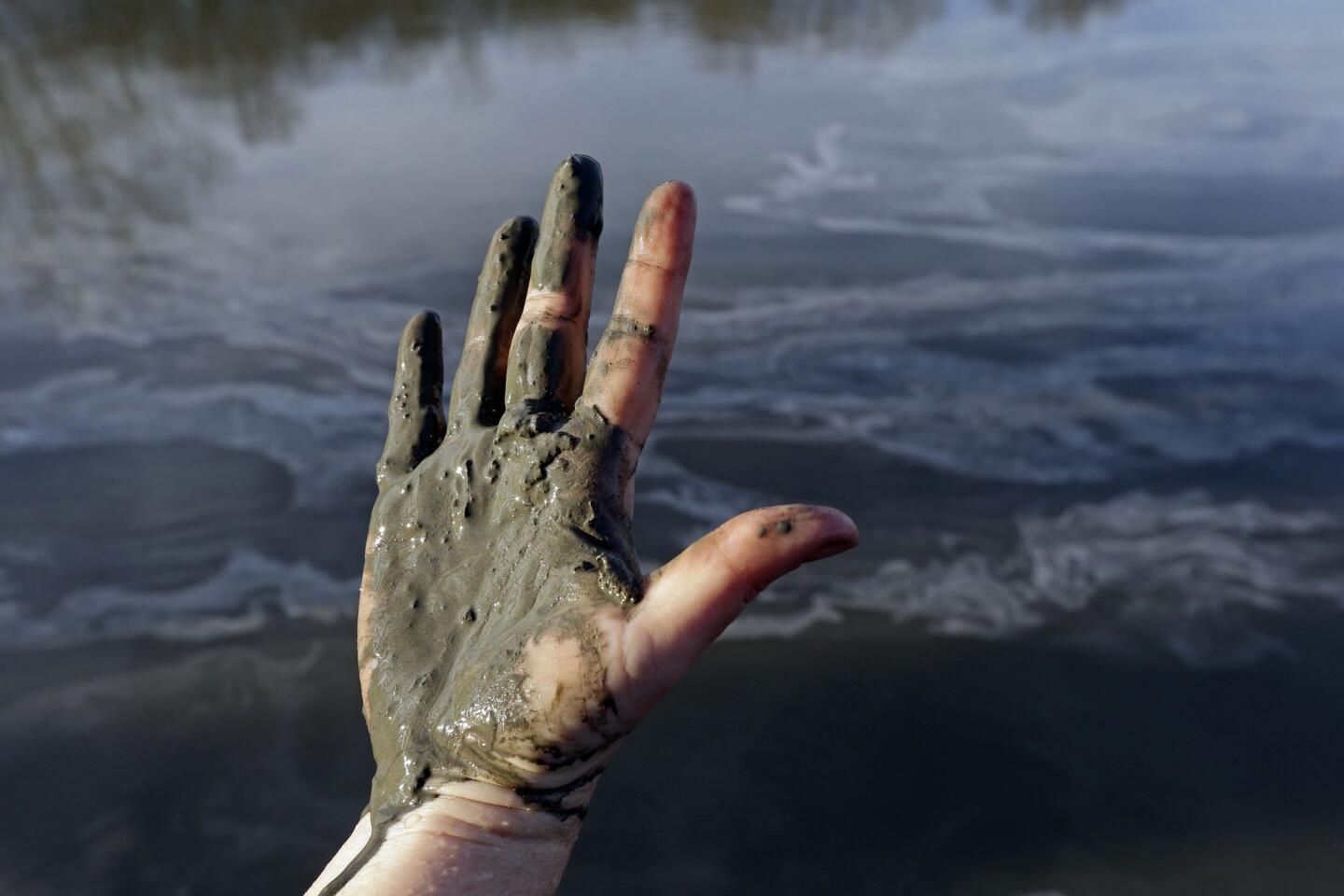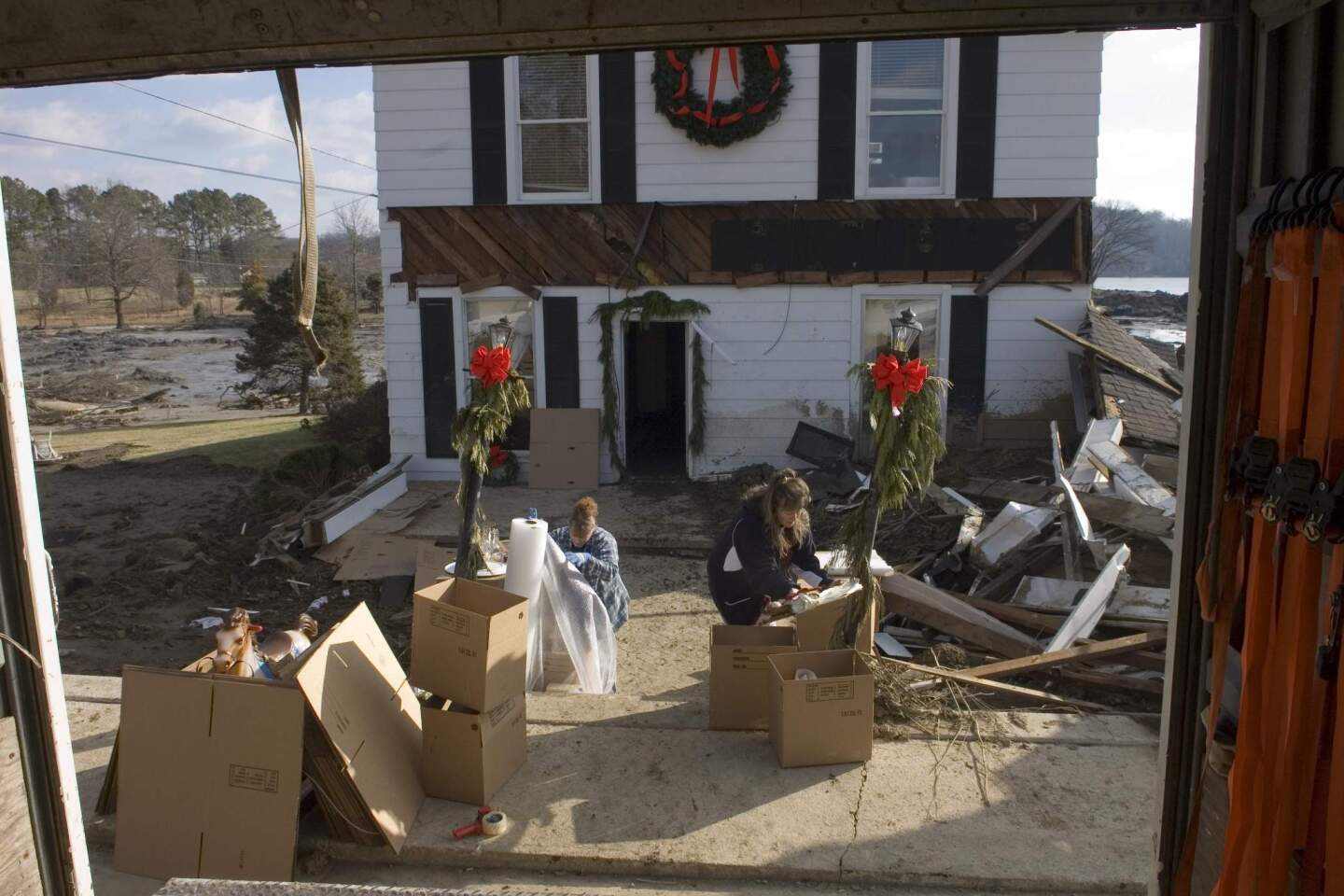EPA announces first federal regulations for coal ash waste
Six years after a catastrophic coal ash spill in Tennessee washed away homes and polluted rivers, the Environmental Protection Agency announced Friday the first federal regulations for the toxic wastes created by coal burned to produce electricity.
The regulations disappointed environmental groups because coal ash is not treated like hazardous waste, as they had demanded. Instead the regulations tend to favor electric utilities. The rules do not cover all coal ash ponds at closed power plants or require that existing unlined coal ash impoundments be moved to lined, dry storage away from waterways.
But for the first time, the EPA will regulate the storage and disposal of the estimated 140 million tons of coal produced by utilities every year. Currently, states regulate coal ash impoundments with standards that vary widely.
Known as “coal combustion residuals,” coal ash is typically stored in unlined ponds or pits next to waterways. It contains toxic arsenic, lead, mercury and other heavy metals that contaminate groundwater, streams and rivers while also polluting the air. The EPA said it had documented 160 cases of air and water contamination from coal ash ponds.
Among the EPA regulations is a requirement that utilities shut down coal ash ponds found to be polluting groundwater or waterways, or considered structurally unsound. The EPA will also increase monitoring of coal ash dust released into the air, and new ponds must be lined.
Under the regulations, impoundments may not be built near wetlands or other sensitive areas, and regular coal pond inspections will be required. Utilities will be required to post on public websites information about the status of coal ash ponds.
Sen. Barbara Boxer (D-Calif.), chairwoman of the Environment and Public Works Committee, said the EPA “has missed a critical opportunity to do the right thing here” and should have classified coal ash as hazardous waste.
Sen. James M. Inhofe (R-Okla.), the committee’s ranking member and its presumptive next chairman, took issue with the rules for another reason, saying they would “make states and utility companies vulnerable to new regulatory costs and expensive litigation.” Inhofe called the EPA announcement “a continuation of the president’s war on fossil fuels.”
Some environmental groups, while welcoming what the Sierra Club called “a modest first step,” said the EPA did not go far enough.
“The EPA is bowing to coal-fired utilities’ interests and putting the public at great risk by treating toxic coal ash as simple garbage instead of the hazardous waste that it is,” said Scott Slesinger, legislative director at the Natural Resources Defense Council.
Slesinger said the regulations leave too much enforcement to the states, which have an uneven track record in regulating coal ash, or to private groups that have sued utilities in the past.
Frank Holleman, staff attorney for the Southern Environmental Law Center, said the regulations, though a positive step, are “the bare minimum.” Many coal ash ponds are in the southeastern U.S.
“We’re in the 21st century, yet we still allow industrial waste to be stored in aging, unlined holes in the ground next to major rivers and drinking water sources,” Holleman said in an interview.
EPA Administrator Gina McCarthy called the regulations “a pragmatic step forward” and said the agency was “making up for decades of uncertainty.”
The regulations will “help prevent pollution of our air and water, protect our families’ health and provide industry with common-sense, consistent and clear national standards for coal ash disposal,” McCarthy said in a conference call with reporters Friday afternoon.
Thomas H. Adams, executive director of the American Coal Ash Assn., said the EPA announcement “puts science ahead of politics.”
Utilities had feared that if coal ash were considered hazardous waste, they would lose billions of dollars a year they earn recycling the product. The EPA says nearly 40% of all coal ash was recycled in 2012.
For decades, utilities have lobbied Congress and contributed to political campaigns to fight any federal regulation of coal ash ponds. Asked why the EPA did not regulate coal ash ponds years ago, McCarthy said the agency had been bound by limits set by Congress.
The massive coal ash spill at the Kingston Fossil Plant in Tennessee in December 2008, which dumped 1.1 billion gallons of coal ash slurry over 300 acres, “raised the level of awareness and concern,” McCarthy said. Since then, she said, the agency has assessed more than 500 coal ash impoundments to document water and air contamination.
On Feb. 2, a coal ash spill at a closed coal-fired plant owned by Duke Energy dumped at least 39,000 tons of coal ash and 27 million gallons of coal ash slurry into the Dan River in North Carolina. The third-worst coal ash spill in U.S. history, it coated the river with toxic sludge for 70 miles in what state regulators called “an environmental disaster.”
Duke, which has been sued by environmental groups, maintains more than 30 coal ash pits at 14 sites in North Carolina. Over the summer, North Carolina’s Legislature required Duke to close its coal ash storage sites — the four most vulnerable by 2019 and all sites by 2029. Federal investigators have launched a criminal investigation into the handling of the Dan River spill.
In a statement, Duke Energy said it was reviewing the new regulations. The utility said it “already is aggressively taking actions to improve coal ash management … by closing ash basins in a way that protects the environment and local communities.”
Pete Harrison, staff attorney for Waterkeeper Alliance, which has closely monitored the Dan River spill, called the new regulations “disappointing.”
The EPA still allows the indefinite use of “this totally antiquated surface impoundment” practice that puts communities at risk, Harrison said in an interview.
The EPA was under a court-ordered deadline of Friday to announce the regulations. The agency has spent the six years since the Tennessee coal ash spill evaluating the structural integrity of coal ash sites, holding public meetings and receiving 450,000 public comments on proposed regulations first announced in 2010.
Under the regulations, utilities with coal ash ponds found to be contaminating groundwater “are going to be on the hook” to shut down polluting sites and clean them up, McCarthy said.
She said the regulations “protect public health while allowing industry the time it needs to be thoughtful about meeting these new requirements.”
david.zucchino@latimes.com
More to Read
Start your day right
Sign up for Essential California for news, features and recommendations from the L.A. Times and beyond in your inbox six days a week.
You may occasionally receive promotional content from the Los Angeles Times.












